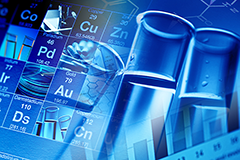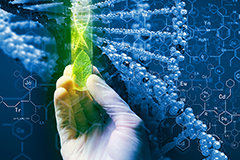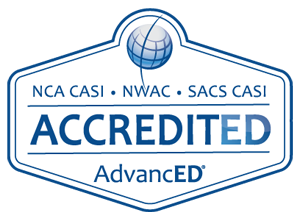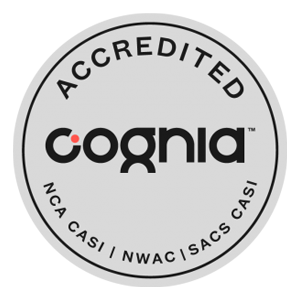
CHEMISTRY CLASS 2
Video-Based, Self-Paced, Teacher-Supported Online High School Education
Welcome to Silicon Valley High School. If you’re looking for a different type of high school experience, you’ve come to the right place. We provide online education courses for the Internet generation, offering more than +55+ online courses, where you will find our online Chemistry courses.
Price: $125 | Credits: 5 | Dept: Science | Course ID# 261-2
This course goal is to complete the high school chemistry program for all high school grades 9-12, and it includes a practical research component to it, making our course one of the best fully online general chemistry course and specialized course you can buy online. Stoichiometry, limiting reagents, percentage yield, solutions and their interactions, solubility, acids and bases, gas behavior, chemical equilibrium, nuclear chemistry, and organic chemistry are just a few of the subjects addressed in the course. The University of California A-G has designated this Chemistry subject as an experimental discipline under category D.
Laboratory Science
To fulfill the chemistry course requirements of the University of California A-G, two components must be completed, which include an online chemistry course and a wet chemistry lab. The online chemistry course covers the curriculum through videos, quizzes, assignments, research, and a final exam each semester. However, it is important to note that the lab kit needed for the wet chemistry lab must be obtained separately, as it is not provided by SVHS.
Laboratory Kit – this companion kit is not included in this course and needs to be purchased separately
You can buy the kit from Quality Science Labs and have it delivered to you by mail. The kit has been created by SVHS and Quality Science Labs specifically for this course. If you already bought the kit for Chemistry Part 1, you can use it for Chemistry Part 2 as well, so you only need to purchase one kit for both courses. By enrolling in the chemistry class and using the customer code given in the course, you can get a discount on the lab kit.
Lab Details and Descriptions
The lab kit contains comprehensive guidelines for the live labs. A brief overview of the labs covered in this online course, can be accessed by clicking here.
Credits & Study Hours
The learner will earn 5 points upon completion of this course, with each credit representing 15 hours of study. However, because every student learns the course at a different tempo and has a different timetable, some students might finish learning the course faster by putting in more study time.
Chemistry Class 2 Course
Video-Based, Self-Paced and Teacher-Supported

Course Details
- 5 Credits – $125
- First semester of Chemistry
Approvals:
ACCREDITED BY:

Video-Based
Many students prefer watching videos to reading textbooks and our curriculum for chemistry class 2 is video-based. We choose engaging content that students say is both informative and entertaining to watch.

Self-Paced
Classes are self-paced to accommodate each student’s schedule. Some students prefer working outside traditional school hours--and they can study at any time at their own pace. A timeline and resources are provided with each course to help students learn to pace the courses for themselves.

Teacher-Supported
Assignments are graded, and feedback is provided by credentialed teachers. Students can submit questions online and receive answers from their teachers by email. Students can also book one-to-one classes or videoconference based tutoring sessions for online courses.
LEARNING OBJECTIVES
In this module, students will learn to gain a comprehension of the following concepts, basic chemistry concepts and physics concepts:
The significance of coefficients in a balanced equation, molar ratios, mole-mole calculations, mass-mass calculations and other stoichiometric calculations.
To solve Limiting Reactant stoichiometry problems as well as how to determine the excess reactant.
The difference and the basic principles between actual, theoretical and percent yields with examples of how to calculate theoretical and percent yields.
The concepts of solutions and solubility. The chemical structure of water, and why water is so important for life.
How and why water acts as a wonderful solvent and provides a medium for metabolism.
The various factors that affect how well a solid-liquid solute dissolves, including Particle Size, Temperature, Agitation and the Chemical Nature of the solute, particularly polarity (Like dissolves like.)
To interpret solubility curves and read solubility curves.
To identify and understand saturated, unsaturated and supersaturated solutions.
Colligative properties, freezing point depression and boiling point elevation.
The relationship between amount of solute and degree of freezing point depression-boiling point elevation.
The general properties of acids and bases. Including the Arrhenius definitions for acids and bases. Bronsted and Lowry’s theory of acids and bases.
To distinguish between strong and weak acids and bases in terms of the extent of dissociation, reaction with water and electrical conductivity.
The pH scale and to consider the effects of acid deposition on limestone buildings and living things. To understand the nature of a strong acid and a strong base. To solve acid-base titration math problems.
The nature of gases as related to Chemistry studies.
The assumptions behind the Kinetic Molecular Theory and some general properties of gases from a molecular perspective. Avogadro’s Law, Boyle’s Law, Lussac’s Law and Charles’ law.
Understanding how the ideal gas equation allows one to find the pressure, volume, temperature and/or number of moles in a certain situation.
To measure and consider the rate of a reaction.
The connection between concentration and reaction rate in terms of the Law of Mass Action and Rate Laws.
The equilibrium constant (K,) and how it can be calculated in various reversible reactions. Le Chatelier’s Principle and how it predicts changes in concentration when “stressing” reactions at equilibrium.
Nuclear and atomic structure and stability, radioactive decay, and nuclear energy. As well as, the biological effects of radiation as well as technology related to energy, medicine, geology, and other areas.
Organic chemistry – why the element carbon results in such a variety of compounds, how those compounds are classified, and the role of organic compounds in biology and industry.
TOPICS COVERED IN THE CHEMISTRY CLASS 2 COURSE
This course covers an introduction to the following subject topics:
Quantities in Chemical Reactions
Solutions and Solubility
Acids and Bases
Gases
Chemical Equilibrium
Nuclear Chemistry
Organic Chemistry
Inorganic Chemistry
Physical Chemistry
Periodic Table and elements
Matter, Atoms and Molecules
Thermodynamics
SIGN UP NOW TO CHEMISTRY CLASS
Yes, you can enroll now, but because our Chemistry Class 2 online courses are all available 24 hours a day, 365 days a year, you can sign up whenever you like. With SVHS, there are no strict due-dates or deadlines, so you can work through your classes at a time that suits you best.
QUESTIONS ABOUT THE CHEMSIRT COURSES?
Click the FAQ (frequently asked questions) link at the bottom of the web page, or chat with us using the chat box at the bottom right of your browser window. When using the chat box below, please specify that you are inquiring about our Chemistry class online courses if you would like to learn more!







